
Cocytius lucifer is a moth of the family Sphingidae first described by Walter Rothschild and Karl Jordan in 1903.

Manduca muscosa, the muscosa sphinx, is a moth of the family Sphingidae.

Manduca occulta, the occult sphinx, is a moth of the family Sphingidae.

Lintneria merops is a moth of the family Sphingidae.

Callionima falcifera is a moth of the family Sphingidae first described by Bruno Gehlen in 1943. It is known from Mexico, Belize, Nicaragua, Costa Rica and Jamaica, south through northern South America.
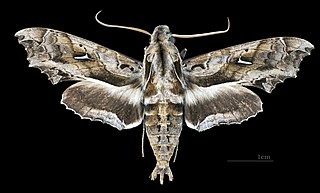
Hemeroplanes triptolemus is a moth of the family Sphingidae.

Stolidoptera tachasara is a moth of the family Sphingidae first described by Herbert Druce in 1888.

Aellopos clavipes, also known as the clavipes sphinx, is a moth of the family Sphingidae.
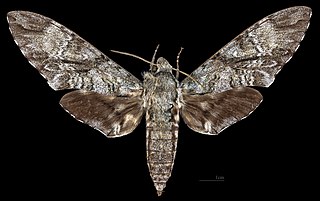
Manduca barnesi is a moth of the family Sphingidae.

Manduca dalica is a moth of the family Sphingidae.
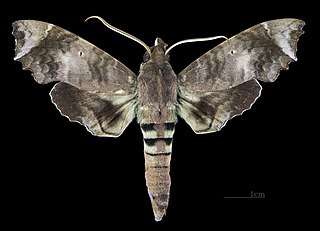
Aleuron carinata is a moth of the family Sphingidae. It was described by Francis Walker in 1856
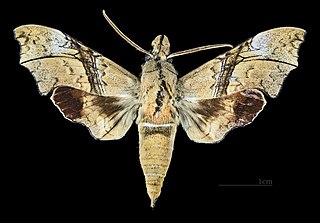
Aleuron iphis is a moth of the family Sphingidae. It was described by Francis Walker in 1856

Callionima pan is a species of moth in the family Sphingidae. It was originally described by Pieter Cramer in 1779.

Callionima parce, the parce sphinx moth, is a species of moth in the family Sphingidae.It was originally described by Johan Christian Fabricius in 1775.

Xylophanes germen is a moth of the family Sphingidae. It is known from Mexico, Costa Rica, Guatemala and is found from Venezuela to Bolivia.

Enyo taedium is a species of moth in the family Sphingidae. It was described by Schaus, in 1890.

Eupyrrhoglossum sagra, the Cuban sphinx, is a moth of the family Sphingidae. The species was first described by Felipe Poey in 1832. It is known from tropical and subtropical lowlands in Cuba and from Mexico and Belize to Guatemala, Costa Rica, Bolivia, Paraguay, Argentina and Uruguay. Occasionally, strays are found in Florida.
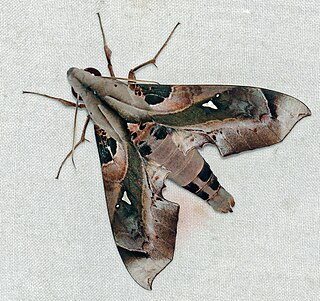
Madoryx plutonius is a moth of the family Sphingidae.
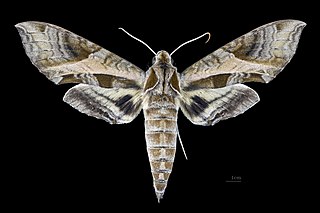
Eumorpha megaeacus is a moth of the family Sphingidae.
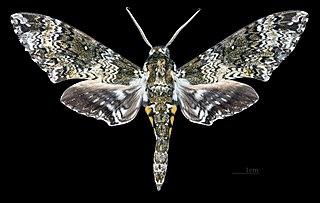
Manduca sesquiplex is a moth of the family Sphingidae. It is known from Mexico, Costa Rica and Nicaragua.























